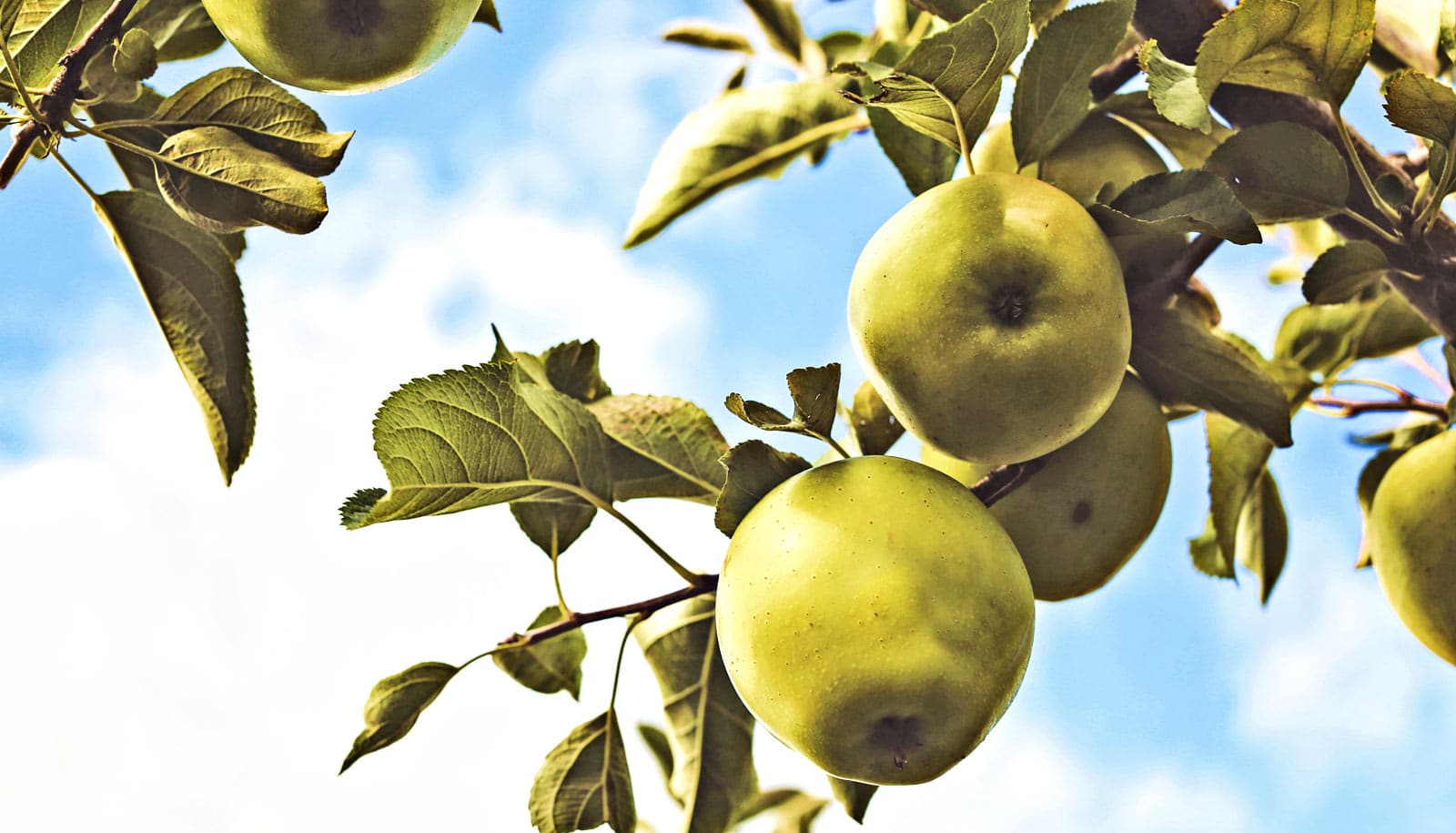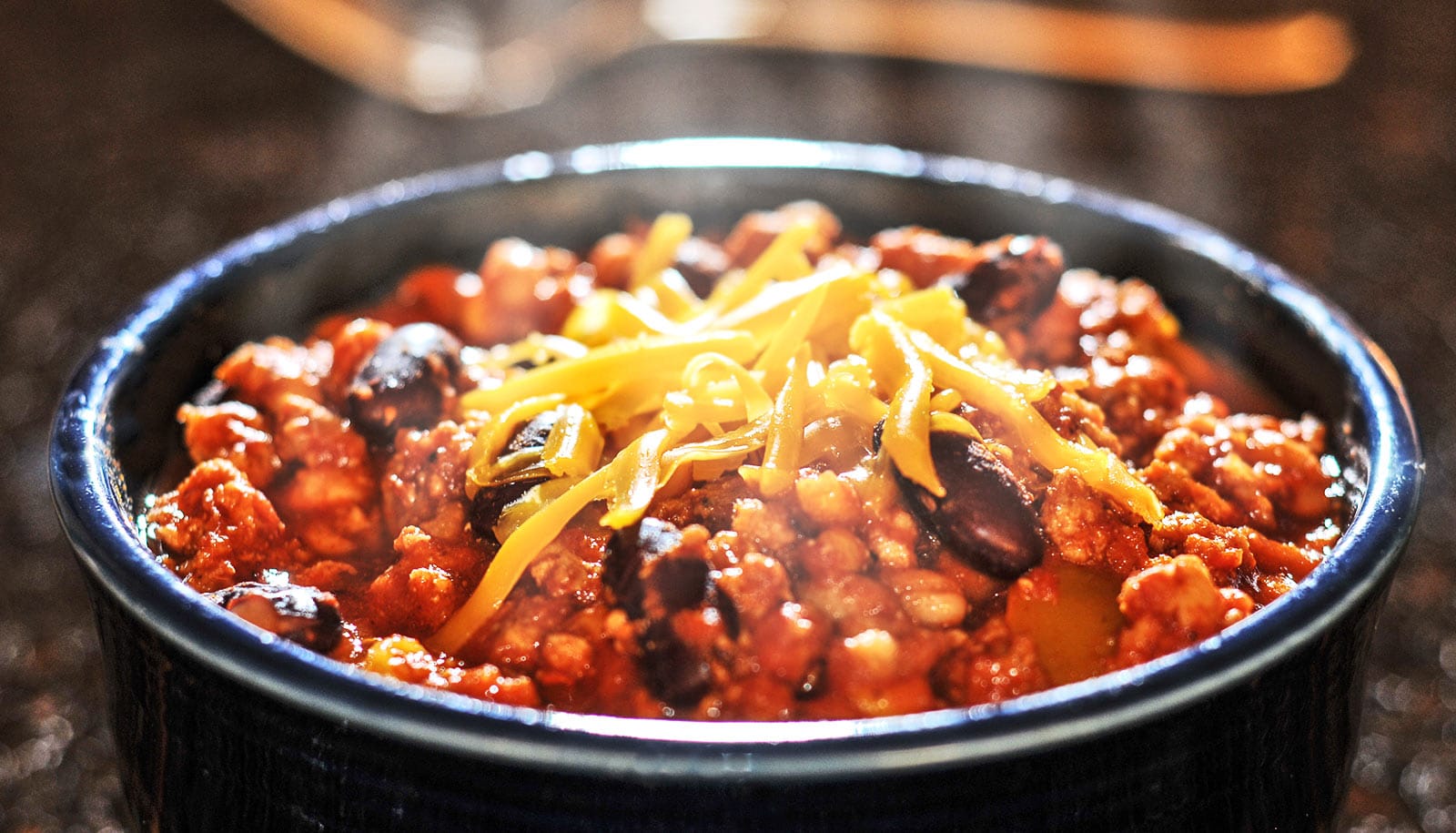New research clarifies the genetic exchange that brought us today’s domesticated apples.
Silk Road travelers, trading their goods and ideas across Eurasia, brought with them hitchhiking apple seeds, discarded from the choicest fruit pulled from wild trees. This early selection would eventually lead to the 7,500 varieties of apple that exist today.
As reported in Nature Communications, the researchers sequenced and compared the genomes of 117 diverse apple accessions representing 24 species, from North America, Europe, and East and Central Asia.
Previous studies have shown that today’s domesticated apple, Malus domestica, arose from the Central Asian wild apple, Malus sieversii, with contributions from crabapples along the Silk Road as it was brought west to Europe.
The results of this new study have provided a much more comprehensive map of apple’s evolutionary history. “We narrowed down the origin of domesticated apple from very broad Central Asia to Kazakhstan area west of Tian Shan Mountain,” says lead author Zhangjun Fei, professor at the Cornell University-affiliated Boyce Thompson Institute.
Additionally, the authors discovered the first domesticated apple had also traveled east, hybridizing with wild apples to yield the ancestors of soft, dessert apples cultivated in China today.
“We pointed out two major evolutionary routes, west and east, along the Silk Road, revealing fruit quality changes in every step along the way,” Fei says.
As the apple traveled west along the Silk Road in the hands of travelers, trees grew from dropped seeds and crossed with sour wild crabapples. The authors found that the European crabapple, Malus sylvestris contributed so extensively to the apple’s genome that the modern apple is more similar to this sour crabapple than to the Kazakhstani ancestor, M. sieversii.
“The [Malus sieversii] fruits are generally much larger than other wild apples. They are also soft and have a very plain flavor that people don’t like much,” says BTI postdoctoral scientist Yang Bai.
Genomes suggests where wolves became dogs
The hybridization between ancient cultivated apples and M. sylvestris, followed by extensive human selection, produced larger apples that are fuller in flavor, crispier, and firmer, giving them a longer shelf life.
Bai explains, “The modern domesticated apples have higher and well-balanced sugar and organic acid contents. That is how the apple started to become a popular and favored fruit.”
In most cases of fruit domestication, the wild ancestor has tiny fruit that was shaped into its large, nutritious cultivated counterpart through centuries of selection. For example, the domesticated tomato is at least 100 times larger than its wild relatives.
“This is not quite the case for apple,” Bai says. “Its domestication started with a medium to large-sized fruit.”
Comparing the different apple genomes, the researchers found evidence supporting two evolutionary steps contributing to apple’s size increase—one before and one after domestication.
The large size of wild M. sieversii gave it an advantage. Having already evolved to a suitable size before cultivation, it was more attractive to growers who would not need to spend much effort selecting for larger fruits.
Did fruit, not friends, give us big brains?
Such a lack of size selection also means that the genes responsible for size increase still retain variability with potential for future selection. The researchers identified several size-associated genetic markers, which is great news for breeders who want to further increase the apple’s girth.
“The genomic regions and candidate genes under human selection for a certain trait identified in this study will be very helpful and inspiring to breeders working on the same trait,” says Fei, who expects the results from this study will, “improve speed and accuracy of ‘marker-assisted selection’ in apple.”
By analyzing a diverse collection of representative apple genomes, Fei’s group has distinguished important genetic markers that will aid breeders in their quest for better apples—be it for disease resistance, shelf-life, taste, or even size.
Funding came from the National Natural Science Foundation of China, the Special Fund for Agro-Scientific Research in the Public Interest of China, and the US National Science Foundation. Coauthors of the study are from Cornell University and Shandong Agricultural University in China.
Source: Alexa M. Schmitz/BTI for Cornell University



